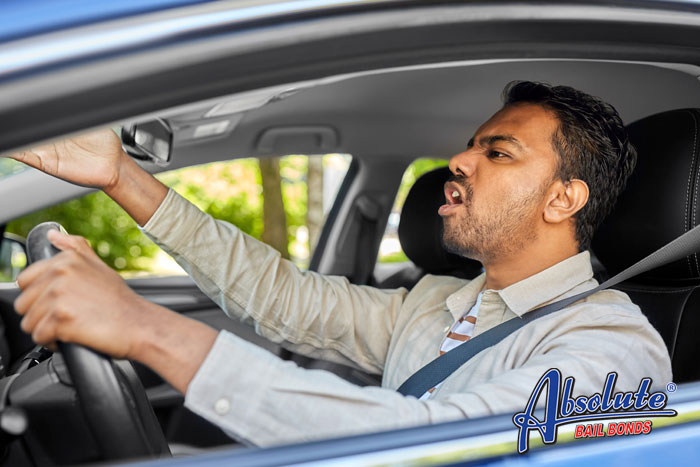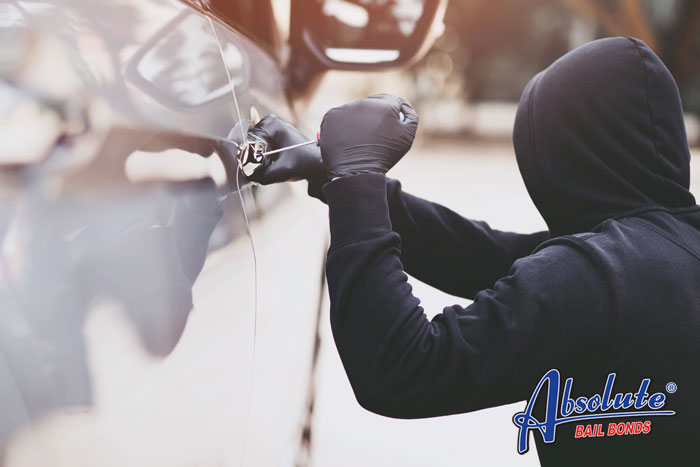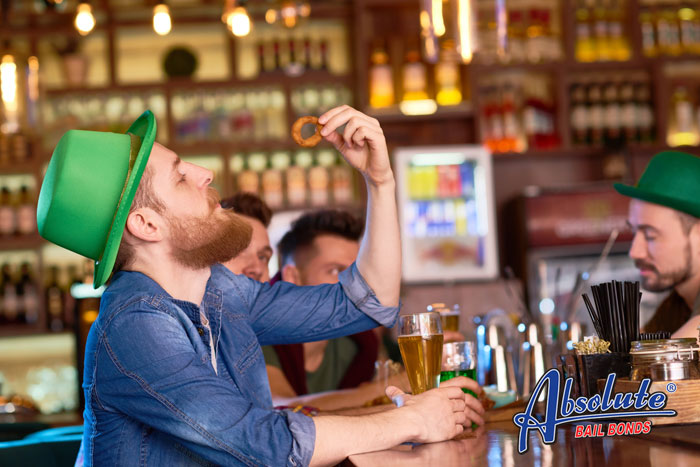
Jaywalking in California
All of us have heard the term jaywalking, but few of us can say exactly what it is. According to the Legal Dictionary, the exact definition of jaywalking is the act of crossing a roadway when it is unlawful to do so. This includes crossing between intersections, as well as crossing at a crosswalk equipped with a signal, without waiting for the proper indication that it is safe to do so.
While jaywalking might not seem like a big deal, you should know that it’s prohibited in California. You can learn more about jaywalking in California by checking out 21955 VC, which makes it very clear that jaywalking is illegal in the state.
The law states that you’re not allowed to walk, “between adjacent intersections controlled by traffic control signal devices or by police officers, pedestrians shall not cross the roadway at any place except in a crosswalk.”
Even though jaywalking is illegal, the good news is that it’s an infraction, not a misdemeanor or felony. Not only won’t it go on a permanent criminal record that can negatively impact your ability to find housing or secure a job, but it also means you don’t have to worry about going to jail. The jaywalking incident will be no worse than getting pulled over for a minor driving mistake.
The bad news is that there are some substantial fines connected to jaywalking in California. Right off the bat, your jaywalking ticket will cost you $196 but there will also be administrative fees, processing fees, and other charges added to the ticket until it’s a substantial amount.
It is also worth noting that if you’re caught jaywalking, the police officer who witnessed the incident will ruin your record. If you have any bench warrants, they’ll have no choice but to arrest you.
The big concern everyone has regarding jaywalking is that someone could get hurt. If you’re decision to jaywalk results in an accident, you’ll likely have to defend yourself in a civil case.

Consequences of Reckless Burning in California
Finally, it’s summertime! Between the increased daylight hours and warmer weather, you’re finally able to do all of your favorite outdoor activities, including having your friends over for a bonfire.
Before you strike a match, you need to make sure you’ve taken the proper steps so that you don’t find yourself dealing with a reckless burning charge.
California’s Penal Code 452 PC exists exclusively for people who either start an illegal fire or who are reckless with fire. The law prohibits you from randomly setting fire to:
- Structures
- Property
- Forest land
The way the law is written, even if you don’t deliberately set fire to something, but simply have a campfire, you can still be charged with being reckless with fire if you fail to follow basic protocols and the fire gets out of control.
Penal Code 452 PC states:
“A person is guilty of unlawfully causing a fire when he recklessly sets fire to or burns or causes to be burned, any structure, forest land or property.
(a) Unlawfully causing a fire that causes great bodily injury is a felony punishable by imprisonment in the state prison for two, four, or six years, or by imprisonment in the county jail for not more than one year, or by a fine, or by both such imprisonment and fine.
(b) Unlawfully causing a fire that causes an inhabited structure or inhabited property to burn is a felony punishable by imprisonment in the state prison for two, three, or four years, or by imprisonment in the county jail for not more than one year, or by a fine, or by both such imprisonment and fine.
(c) Unlawfully causing a fire of a structure or forest land is a felony punishable by imprisonment in the state prison for 16 months, two or three years, or by imprisonment in the county jail for not more than six months, or by a fine, or by both such imprisonment and fine.
(d) Unlawfully causing a fire of property is a misdemeanor. For purposes of this paragraph, unlawfully causing a fire of property does not include one burning or causing to be burned his own personal property unless there is injury to another person or to another person’s structure, forest land or property.
(e) In the case of any person convicted of violating this section while confined in a state prison, prison road camp, prison forestry camp, or other prison camp or prison farm, or while confined in a county jail while serving a term of imprisonment for a felony or misdemeanor conviction, any sentence imposed shall be consecutive to the sentence for which the person was then confined.”
If you’re charged with basic reckless burning of personal property, you’re dealing with a misdemeanor crime. The maximum sentence is 6 months in a county jail and/or a $1,000 fine.
The situation goes from bad to worse if a building or forestland was impacted by your fire. When buildings and forest land are involved, reckless burning in California becomes a wobbler offense. At this point, it’s often referred to as reckless arson.
When you create a forest fire and are only charged with a misdemeanor, the maximum sentence you face is six months in a county jail and/or a $1,000 fine. However if the fire involved an inhabited structure or property, you face a felony charge which carries a sentence of 2, 3, or four years in a state prison.
If someone was injured as a result of your fire, the sentence can include up to six years in a state prison.
If you have any intention of lighting any type of fire this year, it’s in your best interest to be safety conscious and to have all of your safety equipment/tools on hand before you start burning.

Early Warning Signs of Heat Stroke
The longer, warmer days inspire all of us to spend more time outdoors. The problem is that the hotter it gets, the greater the risk of heatstroke.
The problem many people discover is that while there are warning signs that they’re starting to overheat, most either ignore these signs or fail to recognize them for what they are until it’s too late. Make this the year that you sit down and familiarize yourself with the early warning signs of heatstroke. You’ll find that knowing when you’re overheating improves your overall health and how much you enjoy the summer months.
Headaches are often the first sign that you’ve been out in the sun and heat too long. They can also be a sign of dehydration so going indoors and drinking a tall glass of cold water as soon as your head starts to throb can solve both issues before they become serious health concerns.
Keeping a mirror tucked into your pocket while you’re outside isn’t a bad idea. You can use it to keep an eye on your complexion. If you notice you’re becoming flushed, you should either get inside or at least to a nice shady patch so you can cool down a bit.
If your skin feels hot, tight, and dry, you immediately need to take steps to cool down. The fact that you feel hot but aren’t sweating isn’t a good sign. The longer you ignore the state of your skin, the greater the risk of you developing full-blown heat stroke.
Do you feel your pulse pounding in your throat or your heart hammering in your chest? This is often a sign that you’ve developed heatstroke. You need to immediately get out of the sun and start slowly cooling yourself down. If your heart rate doesn’t start to slow down after a few minutes, you’ll want to seek medical assistance.
The hotter you get, the more confused you’ll feel. Things like agitation, sudden irritation, delirium, and slurred speech are signs of advancing heat stroke. Seek medical attention.
Stay cool and healthy this summer!

Avoiding Road Rage in California
Road rage is a serious problem and it doesn’t show signs of getting better. According to the American Automobile Association, approximately 200 murders and 12,000 deaths over seven years were linked to road rage incidents. The NHTSA reported that 66% of traffic fatalities were the direct result of aggressive driving and road rage. The Zebra conducted a study in 2019 that revealed that 82% of drivers committed an act of road rage.
While you may not be able to avoid road rage altogether, there are some things you can do to reduce the number of road rage incidents you’re linked to.
Avoid driving when you’re already on edge.
The more irritated you are when you slide behind the wheel, the greater the odds are that you’ll experience road rage during your commute. Try to calm yourself down before driving. Once you’re on the road, take deep breaths and listen to soothing music or an uplifting podcast.
Give yourself plenty of time to reach your destination. The tighter you are on time, the more recklessly you’ll drive and the more irritated you’ll be at other drivers. Giving yourself a good amount of time to safely reach your destination is one of the best ways to avoid road rage incidents.
Carefully choose your route before you leave. If you know you’re already irritated, choose a route that has the least amount of traffic on it. The fewer cars you encounter on your drive, the more relaxed you’ll be.
Let things go while you’re driving. There will be days when things happen that irritate you. Rather than letting them get under your skin and prompt you into doing something you’ll regret. Take lots of deep breaths, practice defensive driving techniques, and focus on all the good things that are happening around you.
When you encounter an angry driver, don’t engage with them. Stay defensive and let them go ahead of you. Don’t match their aggressive behavior with aggressive moves of your own.

Providing False Credit Card Information
There are times when we could all use a little extra money. Adding an additional line of credit to our lives seems like a good way to get it. The problem is that if you’re already overstretched, the credit card companies will likely reject your application. This can prompt some of us to consider providing false credit card information.
Before you start to provide someone with false credit card information you should know about Penal Code 484f PC. This is the law that outlines the consequences of providing false credit card information in California.
The law states: “(a) Every person who, with the intent to defraud, designs, makes, alters, or embosses a counterfeit access card or utters or otherwise attempts to use a counterfeit access card is guilty of forgery.
(b) A person other than the cardholder or a person authorized by him or her who, with the intent to defraud, signs the name of another or of a fictitious person to an access card, sales slip, sales draft, or instrument for the payment of money which evidences an access card transaction, is guilty of forgery.”
If you think providing false credit card information is something that only happens when people lie on credit card applications, you’re wrong. While there are lots of people who do lie when they apply for credit cards, there are many different ways a person can violate the law.
Examples of providing false credit card information include:
- Creating fake debit/credit cards
- Using a friend/family member’s credit card without first getting their permission
- Providing a store with a fake credit card number
- Doing something to alter the numbers on a credit/debit card
Providing false credit card information is a wobbler offense. The circumstances surrounding the incident and the amount of money involved are used to determine if you’ll be charged with a misdemeanor or a felony. If you’re convicted of misdemeanor falsifying credit card information, the maximum sentence is one year in jail and restitution. In felony cases, the maximum sentence is three years in prison.
In most cases, providing false credit card information is just one of the charges you’ll have hanging over your head. Additional charges usually connected to this type of crime usually include forgery, petty theft, stealing a credit card, etc.

Graduation Parties and Underage Drinking
Finally! It’s graduation season. For many students and parents, this is a day they’ve been waiting for their entire lives. They’re finally putting high school behind themselves once and for all and allowing themselves to focus on the future.
If you’re a graduating senior or someone who just likes to hang out with a group of senior friends, remember that while you’re allowed to have a good time and enjoy life, you aren’t legally allowed to consume alcohol in California. The fact that you’ve graduated from high school doesn’t matter. In California, you’re not allowed to drink until you turn 21. Getting caught consuming alcohol at a graduation party prior to your 21st birthday can have an immediate negative impact on your future.
One of the first things you need to realize is that you don’t have to be caught actually drinking in order to get into trouble for consuming alcohol when you’re still underage. If you’re surrounded by beer bottles, have a drink in your hand, or simply drank a little bit, you’re still going to be in trouble with the law. California has a zero-tolerance policy when it comes to minors and drinking.
The consequences of getting caught drinking at a graduation party while you’re a minor are both scary and expensive. In most cases, the judges will order you to pay fines and do substantial community service. In some situations, especially if this isn’t the first time you’ve been caught drinking while still a minor, the judge will decide that you should spend some time in jail.
You’re bad decision to drink at a friend’s graduation party even though you were a minor will likely result in you losing your driving privileges for a time. It doesn’t matter that you were smart enough to avoid driving after you were drinking. If you’re caught buying alcohol, using a fake ID to get alcohol, or being in possession of alcohol, your driver’s license will likely be suspended. Not only does this mean you have to beg for a ride whenever you want to hang out with friends, but it also makes getting a summer job more difficult. When you are finally able to drive again, you’ll likely have to pay a significantly higher insurance premium.
An increasing number of colleges are starting to crack down on minors who get caught with alcohol. There have even been reports of scholarships being withdrawn and application approvals getting rescinded.
Considering the long-term impact a single drink can have on your future, it’s in your best interest to avoid alcohol this year while you’re celebrating graduations.

Misusing a Disability Placard in California
Disability placards aren’t something everyone in California can appropriate and use for their own purposes. Getting caught misusing a disability placard in California can land you on the wrong side of the law.
If you think you can misuse a disability placard and not get caught, you should think again. It’s easy for police to spot placard misuse. When they discover someone is misusing the placards, the police are usually quick to take action.
Disability placard misuse is dealt with in Vehicle Code 4461 VC. The law has multiple examples of how disability placards are not to be used. One such example is, “A person shall not lend a certificate of ownership, registration card, license plate, special plate, validation tab, or permit issued to him or her if the person desiring to borrow it would not be entitled to its use, and a person shall not knowingly permit its use by one not entitled to it.”
Other ways a disability placard can be misused include:
- Continuing to use a disability placard that has expired or that has been revoked
- Borrowing someone’s vehicle and using their placard even though you’re not disabled and they aren’t in the vehicle with you.
One could consider California’s Vehicle Code 4461 VC to be one of California’s wobbler laws, but instead of shifting between a felony and a misdemeanor, it could be handled as an infraction or a misdemeanor.
A majority of cases involving the misuse of a disability placard are handled as an infraction. This is good news since there is no jail time, only a fine. That being said the fine can be really steep. The amount can range from $250 to $1,000.
If the case is handled as a misdemeanor, jail will be one of the possible consequences. The maximum sentence is six months in jail and/or a fine that could be as large as $1,000. In some situations, the judge will order misdemeanor probation rather than sending the defendant to jail. It’s also possible that the defendant will have to perform some type of community service and/or seek counseling.
The good news is that you’ll have nothing to worry about provided you are in legal possession of a disability placard and are good about making sure it never expires.

California Cities Where Your Car is Most Likely to be Stolen
Car thefts have become an increasingly big headache for police departments across the United States. Shortly after the pandemic started in 2020, law enforcement agencies throughout the United States noticed they were responding to more stolen vehicle reports than they had in past years.
“Auto thefts saw a dramatic increase in 2020 versus 2019 in part due to the pandemic, and economic downturn, law enforcement realignment, depleted social and schooling programs, and, in still too many cases, owner complacency,” David Glawe, president and CEO of the NICB, stated in a Forbes interview.
Many of the stolen vehicles were taken directly from the owner’s regular parking space and since many of the drivers had little use for their vehicle while things were shut down, it sometimes took before they discovered that their vehicle was no longer where they’d left it. The National Insurance Crime Bureau (NCIB) reported that 10.9% more cars were stolen in 2020 than in 2019. Throughout the United States, 880,595 vehicles were reported stolen during 2020.
While auto thefts skyrocketed throughout the United States, California was hit the hardest. They led the nation in pandemic car theft. Throughout 2020, reported that 905.41 vehicles were stolen for every 100,000 of the state’s residents.
While no part of California is completely free of car thefts, there are some cities where you’re car is at an increased risk of theft.
Commerce, CA
At first glance, Commerce seems like a sunny, cheerful town in L.A. County, but dig just a little deeper and you discover that not only does Commerce have more car thefts than any other California city, but that it also has the highest overall crime rate. The average crime rate for Commerce, CA is 244 percent higher than other, similarly-sized cities. Many of these crimes involve car theft. In Commerce, the car theft rate is 2,742 thefts for every 100,000 Commerce residents.
Oakland, California
The city of Oakland is nestled up to San Francisco. Considering the city has a reputation for violence and gang-related crime, it shouldn’t come as a surprise to learn that Oakland has a crime rate that’s a whopping 121 percent higher than California’s average. It also shouldn’t come as a surprise that car theft is a huge problem in Oakland. The issue of car thefts in Oakland recently gained some media attention after a man who was attempting to halt some car thieves was fatally shot
San Pablo, California
Many residents of San Pablo struggle to make ends meet. They also struggle to prevent their vehicles from getting stolen. Car thefts in San Pablo are particularly common near the local Contra Costa College and the local casino.
What steps do you take to keep your car safe when you’re visiting one of these three California cities?

Be Smart. Don’t Drink and Drive on St. Patrick’s Day
Many people spend the entire year looking forward to St. Patrick’s Day. The holiday is a huge deal in some locations, particularly those that have a large Irish American population.
The great thing about St. Patrick’s Day is that the holiday is basically a 24-hour party. Many bars and restaurants run all sorts of special. Many cities host parades. Sports teams often wear special uniforms and have an assortment of events planned for the holidays.
It’s also a day when many people are arrested for drunk driving. Nothing ruins an otherwise fun day as getting arrested because you made the mistake of sliding behind the wheel after you’ve had to
much to drink on St. Patrick’s Day.
The police and court officials don’t care that you simply wanted to have a good time on St. Patrick’s Day. Their main concern is keeping California’s residents safe from drunk drivers.
Getting arrested for drunk driving on St. Patrick’s Day will ruin your immediate future. The judge won’t go lightly on you because you wanted to have a good time and celebrate a saint. If it’s the first time you’ve ever been convicted of drunk driving in California
If you’re convicted of DUI for a St. Patrick’s Day incident you will be charged with a misdemeanor and could spend up to 6 months in a county jail and be ordered to pay a $390-$1000 fine.
The sentencing for subsequent DUIs becomes increasingly more severe. If someone is injured as a result of you driving while intoxicated, you will face additional charges and also likely be named as the defendant in a civil lawsuit.
The best way to avoid being arrested for a DUI on St. Patrick’s Day is making sure you have a designated driver or calling a taxi/rideshare.
What you shouldn’t plan on doing is sleeping it off in your car. While this may seem like a perfectly good idea, if you’re spotted getting into your car after you’ve had too much to drink, there’s a chance an officer will decide that you intended to drive and arrest you. While a conviction for the intent to drive while intoxicated isn’t nearly as serious as an actual DUI, it’s still intense. The rule of thumb for an intent to drive drunk conviction is that the sentence is half of what you would get if you were charged with an actual DUI. So instead of serving 6 months in jail, the judge could sentence you to three months and/or charge you a $195-$500 fine.


